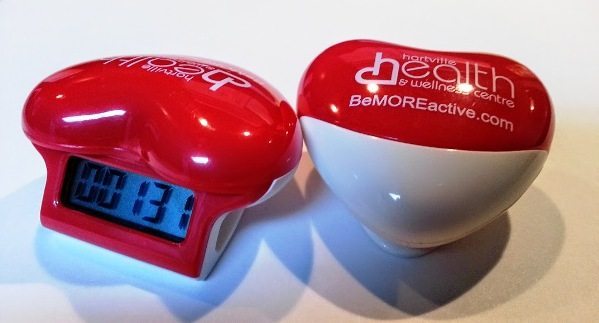Be More Active
Stop by and get your FREE pedometer.
As a health care facility, we’re in business to help improve lives. Our latest mission helps remind our patients and clients to be more active: Stop by our office, ask for a pedometer and it will be given to you. Free.
Why? Because we care, and encouraging you to be more active is one small thing we can do that can lead to big changes in your health and wellness. You being more active not only reduces your risk of back pain, but also reduces your risk of cancer, heart disease, high blood pressure, obesity and depression. We all need to be more active.
Stop by our office, ask for a pedometer and it will be given to you. Free.
Being active throughout the day is what keeps you healthy.
For thousands of years our ancestors spent a large portion of their time moving around on foot. From the “hunter-gatherer” era to more recent times of working on farms, a normal workday used to be spent doing physical labor. Over the past century, this has changed dramatically.
On average, we spend more time sitting down (9.3 hours) than sleeping on any given day. The human body is not built for this — the obesity, diabetes and back pain it contributes to is a major public health problem.
But there is a simple solution to this problem. We all need to be more active. The good news is that being active throughout the day trumps exercise.
Here are 3 steps you can take to be more active.
- Find your motivation to be more active. Increasing activity levels will help you achieve major health goals (e.g., losing weight) or life outcomes (e.g., living longer). Everyone has unique motivators—improved health, better mood, stress relief, more energy, a sense of accomplishment, etc.
- Figure out how to slowly add a little movement each day, or at least spend less time sitting. There are literally hundreds of moments in a day when you can embed more activity into your routine.
- Measure how much you move each day. One little secret of medicine and social sciences is how measurement itself creates improvement. This means if you want to increase your activity, measure how much you move. When people are assigned to wear a pedometer as part of randomized controlled trials, they walk at least one extra mile per day on average. Overall activity levels go up by 27 percent. Body Mass Index (BMI) decreases, and blood pressure goes down.
NOTE: Based on the latest research, 10,000 steps per day is a good target for overall activity. This equates to roughly five miles, which is nowhere near as daunting as it sounds once you start adding up all of your daily movement. On the other end of the continuum, people who walk fewer than 5,500 steps are considered sedentary.
We’re giving away a FREE PEDOMETER to anyone who stops by our office and asks for one. Stop by and ask for your free pedometer today!

